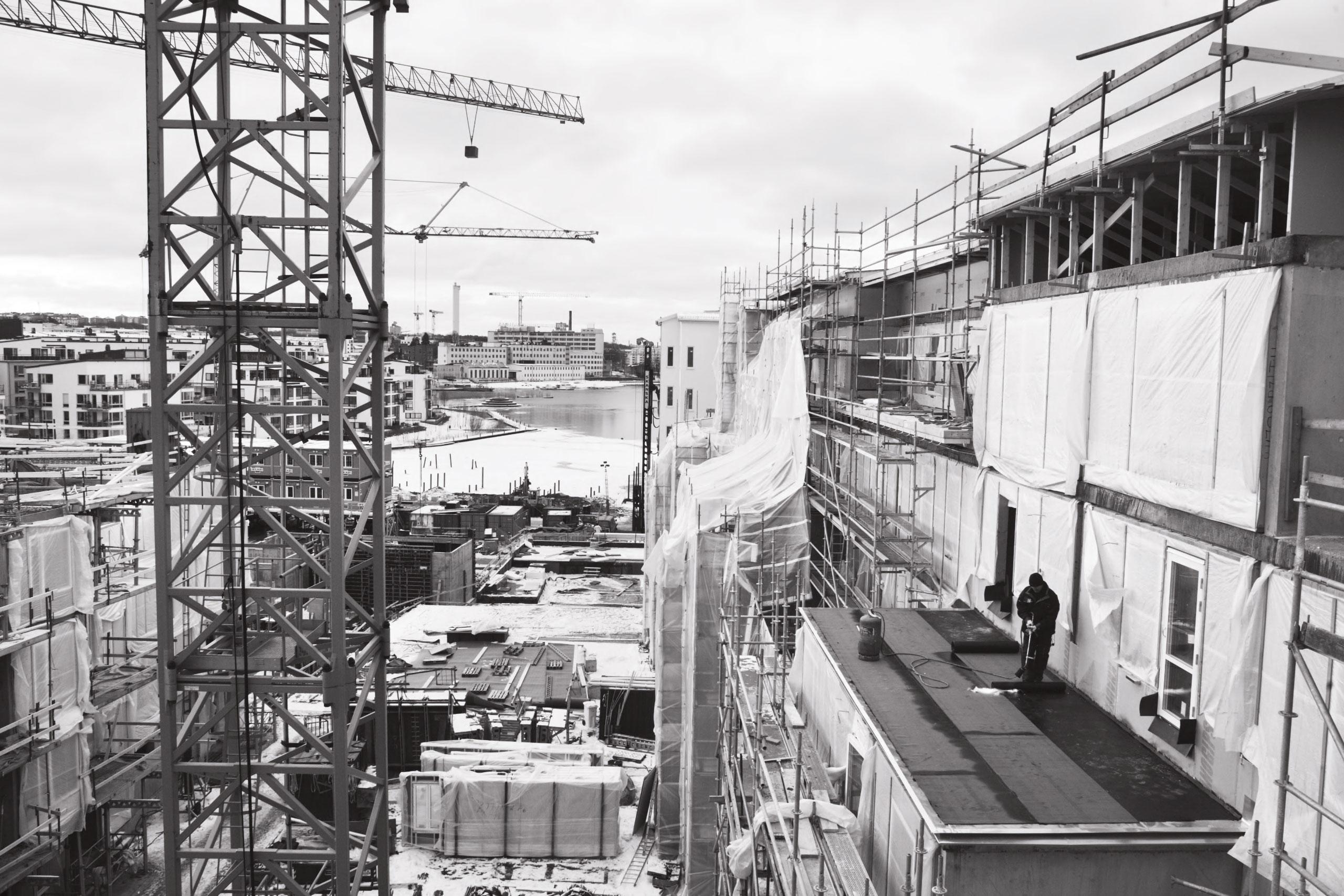It all started with builder John Mattson
In 1945, builder John Mattson starts his company, John Mattson Byggnads AB, now JM AB. During the 1950s, JM grows and the welfare state takes shape. American culture floods over country lines and Swedish design is beginning to peak. The standard of housing rises, focusing on families, and new areas are built on the Work, Home, Center principle. For instance, JM builds housing for HSB in Stockholm, Farsta, Nacka and Saltsjöbaden. The company also launches the new townhouse and link-detached housing concepts. At first, the public is sceptical, but eventually, sales increase.
The 1960s, 70s and 80s
Pop music is all the rage. In response to the need for housing in Sweden in the 1960s, homes are built in what is called the Miljonprogrammet initiative. Stockholm City is in the throes of change and JM helps construct Hötorgs City. Construction of Wennergren Center is completed. In the area of Norrköping, JM builds Kolmården Zoo. In 1965, John Mattson sells the company’s construction operations to AB Industrivärden and steps down from the CEO role. He stays on as the Chairman of the Board until 1979. During this period, the company grows through a long list of acquisitions. JM is also established in Belgium. Bold colors and rounded shapes. It is the 70s and IKEA starts to really make an impact on Swedish homes. Great numbers of people move out of the cities in the ‘Green Wave’ or gather in collectives. Among other projects, JM builds Kulturhuset in Stockholm. In the 80s, architecture is characterized by post-modernism and JM creates the new Södra Station residential area in Stockholm.
